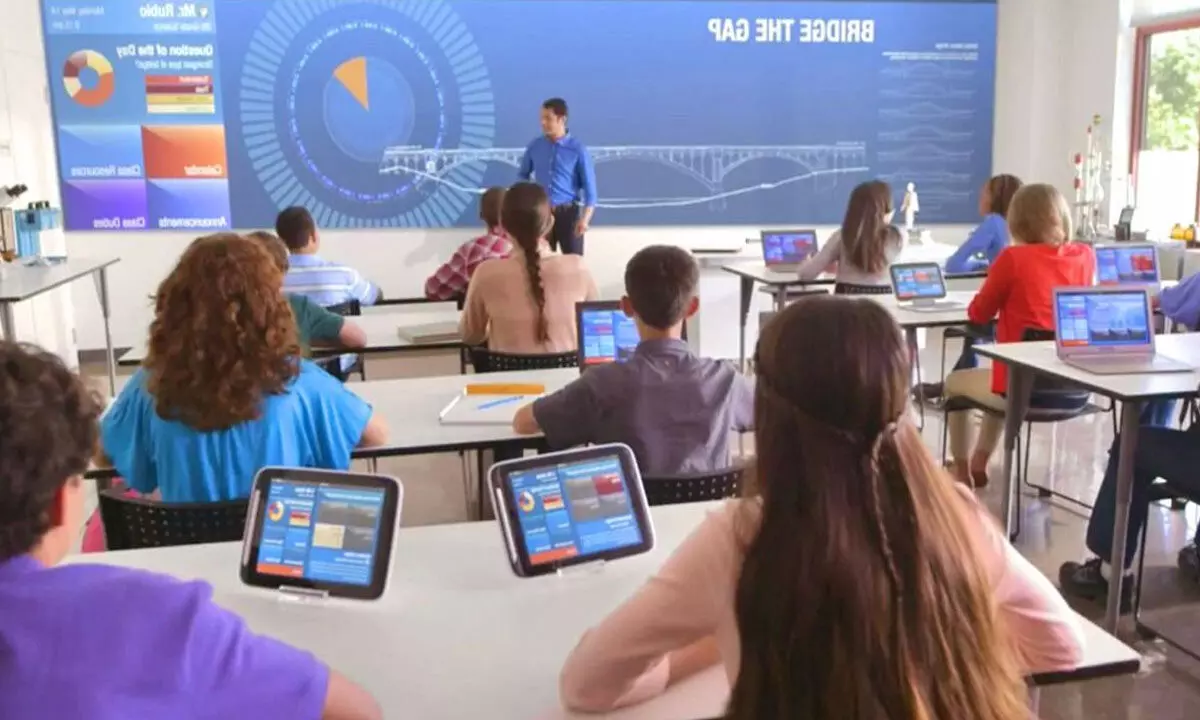Transforming schools for enhanced student learning

In recent years, Indian schools and colleges have changed significantly in their approach to education.
In recent years, Indian schools and colleges have changed significantly in their approach to education. Switching from traditional, rigid classroom setups to contemporary designs and flexible spaces has been pivotal in enhancing the learning experience for students.
Breaking away from traditional classrooms
Traditional classrooms, with rows of desks and a teacher’s desk at the front, have long been the standard in Indian colleges. However, modern Indian colleges are adopting flexible classroom layouts that can be easily modified to suit different teaching styles and activities. This flexibility enables educators to create dynamic and engaging learning environments.
Flexibility in classroom design/student-centric furniture
A key element of contemporary school design is flexibility. Schools are incorporating movable furniture, like modular desks and chairs, to create adaptable learning environments. Student-centric furniture focuses on providing comfortable and functional seating and workspaces tailored to the needs of students. These furnishings enhance students’ comfort and concentration, promoting a more effective learning experience. This adaptability promotes student engagement and participation, as they have the freedom to collaborate and interact in different ways.
Interactive technology integration:
Modern Indian colleges are also embracing technology as a fundamental component of contemporary design. Colleges are incorporating interactive technology such as smartboards, digital projectors, and educational apps to make lessons more engaging and interactive. This integration helps students access a wider range of learning resources.
Collaborative learning zones
Recognizing the importance of holistic development, many modern Indian schools are creating outdoor learning environments. These spaces include gardens, open-air classrooms, and recreational areas that allow students to connect with nature while learning.
Student-centered design
Contemporary design places a strong emphasis on creating student-centered spaces. This means designing classrooms and common areas with the student’s needs and preferences in mind. The student-centered design incorporates comfortable seating, flexible learning zones, and elements that cater to diverse learning styles. By prioritizing the students’ comfort and agency, these schools empower them to take an active role in their education.
Multi-use spaces
Multi-use spaces are designed to serve multiple functions. They can transformed from regular classrooms into auditoriums, event spaces, or laboratories, optimizing space utilization within the school. NIFT, NID, IIT, UID, PEARL, and TDV are some notable examples of multi-use spaces. These institutes help students to harness their creativity and maximize spatial efficacy, thereby increasing productivity.
Inclusivity and accessibility
Modern Indian colleges are also focusing on inclusivity and accessibility. They are designing spaces that are welcoming and accommodating for students with diverse needs and abilities. This includes ramps, elevators, and sensory-friendly spaces to ensure that every student can access and benefit from the learning environment.
Sustainable practices
Lastly, contemporary college design in India is increasingly integrating sustainable practices. Schools are incorporating energy-efficient lighting, natural ventilation, and green building materials to reduce their environmental footprint. This not only teaches students about the importance of sustainability but also helps schools save on operational costs in the long run.
Indian colleges are changing to better serve students in today’s world. They’re making their buildings and places more modern and adaptable that meet their student’s needs. These colleges are not just for learning but also for students to grow and be prepared for the rapidly changing world. As education continues to change, these design ideas will be really important in making Indian education even better.
(The author is Academic Director of Academy of Fashion & Art (AFA))
















